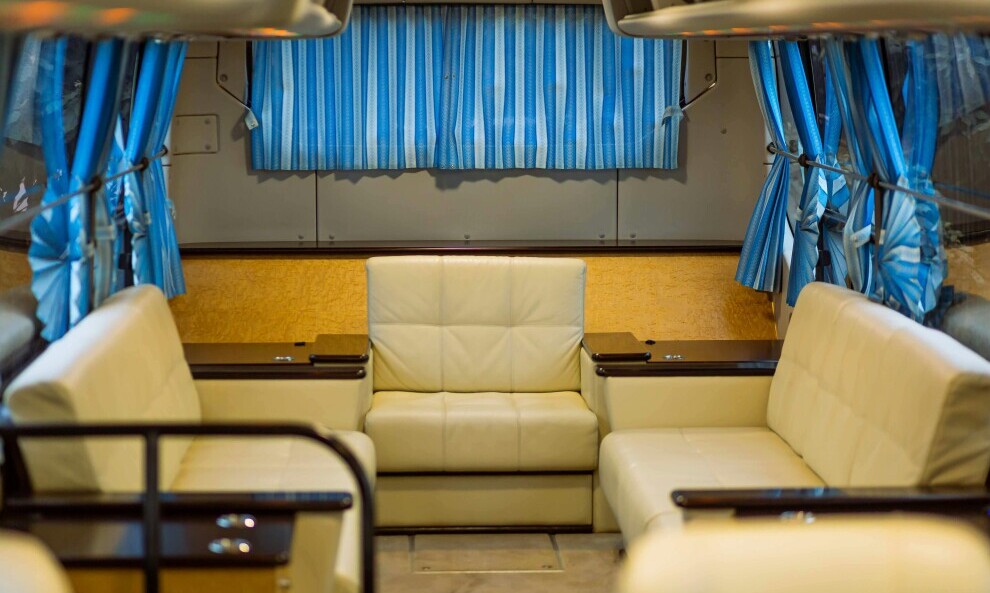Thinking about trading your house keys for the open road? Full-time RV living sounds like a dream—freedom, adventure, and waking up to new scenery whenever you want. But before you dive in, there are a few practical things you need to figure out. I’ve been living this lifestyle for over three years, and trust me, the right preparation makes all the difference. Here are 10 essential questions you need to answer before committing to life on the road.
1. What Type of RV is Best for Full-Time Living?
Not all RVs are created equal. You’ve got Class A motorhomes (big and luxurious), Class B vans (compact and nimble), Class C motorhomes (a balance of space and drivability), fifth wheels, and travel trailers. The right one depends on your lifestyle, budget, and how comfortable you are driving a large rig.
Class A motorhomes offer plenty of space and amenities, making them feel like a home on wheels, but they can be intimidating to drive and expensive to maintain. Class B vans are great if you want to stay nimble and park almost anywhere, but the space is limited. Class C motorhomes are a happy medium, offering a good mix of space and ease of driving. Fifth wheels and travel trailers give you the flexibility to unhitch and use a separate vehicle for exploring, but they require a capable tow vehicle.
During our 3.5 years of full-time RV living and travel we had three different rigs. An Entegra Accolade Super C, an Alliance fifth-wheel, and a Coachman Freelander Class C. Each with their own pros and cons. See RVs I’ve Owned for more information about these RVs.
My advice? Rent a few different types before you buy—you’ll quickly figure out what fits your needs, comfort level, and budget.
2. How Much Does It Really Cost to Live on the Road?
Living in an RV isn’t always cheaper than a traditional home. Sure, you’re ditching the mortgage, but you’ll still have expenses: fuel, maintenance, insurance, campground fees, and everyday living costs. Fuel costs can vary widely depending on how much you travel and the type of RV you own. Maintenance is another big one—things break on the road, and repairs can get expensive fast.
Campground fees also add up. While some places offer free or low-cost boondocking, many RV parks charge $30-$70 per night, and premium spots can be even more. Then there’s insurance, which can be higher for full-timers (and hard to get) than for occasional RV users. Don’t forget hidden expenses like unexpected repairs, upgrading your gear, or splurging on a prime campsite.
A solid monthly budget can help keep things in check—track everything for the first few months to get a real picture. It’s better to overestimate your expenses than to be caught off guard.
3. How Do I Find Reliable Internet on the Road?
Reliable internet is a must, especially if you work remotely. We used Starlink for our internet, and it worked great at about 90% of our stops. It’s a game changer for staying connected, even in remote areas. Starlink is satellite-based, which means you can get high-speed internet in places where traditional cell service doesn’t reach. Just make sure your campsite has a clear view of the north sky.
Other options include mobile hotspots from major carriers like Verizon, AT&T, and T-Mobile. You can also use signal boosters to improve weak cell signals. Checking cell coverage maps before heading to your next destination helps ensure you won’t be left in a dead zone. But honestly, Starlink has been our go-to—it’s reliable, fast, and worth the investment if you need to stay connected.
4. Where Can I Park or Camp Overnight, Legally and Safely?
Knowing where you can park overnight is key. RV parks offer full hookups and amenities but can be pricey. State and national parks offer beautiful settings, but they often require reservations well in advance. Boondocking on public land is a great way to save money and enjoy solitude, but you’ll need to be self-sufficient without hookups.
You can also stay overnight at places like Walmart, Cracker Barrel, and some truck stops—just always check with the manager first. Apps like Campendium, iOverlander, and AllStays are lifesavers for finding safe, legal spots. They provide reviews, amenities, and even notes on cell coverage, which is crucial if you rely on internet access.
5. How Do I Manage Mail and Package Deliveries While Traveling?
Handling mail on the road sounds tricky, but it’s easier than you think. We found America’s Mailbox to be a great service for forwarding our mail and managing packages. They handle everything from sorting and scanning to forwarding important documents wherever you are.
For online shopping, Amazon Lockers are a convenient option if you’re near a city. You can also have items shipped to a local post office using General Delivery—just call ahead to confirm they accept it. Staying organized with your important documents is crucial—don’t let things pile up, and always know where your critical paperwork is.
6. What Are the Biggest Maintenance Issues to Expect?
RV maintenance is non-negotiable. You’ll need to dump your tanks regularly, check tire pressure before every trip, and handle routine tasks like oil changes, brake checks, and sealing roof seams to prevent leaks. Plumbing issues, electrical problems, and appliance repairs are all part of the package.
Keep a basic tool kit on board—trust me, you’ll use it more than you think. It’s also wise to carry spare parts like fuses, light bulbs, and hose connectors. Know when to DIY and when to call in a pro. Preventative maintenance saves you from bigger headaches down the road, so don’t skip it.

7. How Do I Handle Healthcare and Medical Needs on the Road?
Healthcare on the road can be a challenge, but it’s manageable with some planning. Look into health insurance plans that work nationwide—many full-timers opt for high-deductible plans with health savings accounts. Telehealth services are a lifesaver for minor issues, letting you consult with a doctor from anywhere.
For prescriptions, using national pharmacy chains like CVS or Walgreens makes refills easier. Always know where the nearest urgent care or hospital is, especially if you’re boondocking in remote areas. Having a well-stocked first aid kit and knowing basic first aid can also make a big difference.
8. What’s the Best Way to Budget for Fuel, and How Do I Save on Gas?
Fuel will be one of your biggest expenses, especially if you’re moving frequently. Calculate your mileage based on your RV type, and plan routes to avoid unnecessary detours. Apps like GasBuddy help find the cheapest gas nearby, and memberships like Good Sam and Pilot Flying J offer fuel discounts. For diesel check out the Open Roads program.
Driving slower and avoiding heavy loads can improve fuel efficiency—the faster you go, the more fuel you burn. Plan your trips to minimize backtracking and stay longer at each location to reduce fuel costs. It’s all about finding a balance between adventure and efficiency.
9. How Do I Stay Safe While Traveling and Camping in Unfamiliar Places?
Safety should always be a priority. Trust your instincts—if a place feels off, move on. Invest in RV security gadgets like door alarms, motion lights, and GPS trackers. Keep your doors locked, even when you’re inside, and don’t leave valuables visible.
Research campgrounds and neighborhoods before you arrive, and check reviews for any red flags. Always have an emergency plan, including knowing the nearest exit routes and having a way to contact help if needed. Staying aware of your surroundings goes a long way in keeping you safe.
10. What’s It Really Like Adjusting to Small-Space Living?
Small-space living requires a mindset shift. You’ll need to downsize significantly—only keep what you use regularly. Clothes, kitchenware, and gadgets need to be streamlined. Storage hacks, like collapsible kitchenware, under-bed storage, and multi-purpose furniture, make a big difference.

Be prepared for tight quarters, especially if you’re sharing the space with family or pets. Communication and patience are key. But remember, the trade-off is waking up to new adventures every day. The freedom and experiences far outweigh the challenges of a smaller living space.
Conclusion:
Full-time RV living isn’t just a lifestyle—it’s an adventure. It comes with its challenges, but with the right preparation, it can be the most rewarding decision you ever make. The freedom to explore, the simplicity of life on the road, and the memories you create make it all worthwhile. Got more questions or your own RV experiences to share? Drop them in the comments—I’d love to hear from you.
About the Author
Jim has 3.5 years of experience living and traveling full-time in an RV. From “moochdocking” with family and friends to navigating the financial intricacies of RV life, he shares practical advice rooted in firsthand experience. His goal is to help fellow adventurers embrace the RV lifestyle with confidence and ease.
There are no affiliate links in this post.


This is an excellent and comprehensive guide for anyone considering full-time RV living. You’ve covered all the major aspects, from choosing the right RV to budgeting, staying connected, and handling healthcare on the road. As someone who has always been intrigued by the idea of hitting the open road full-time, I really appreciate the practical insights—especially about testing different RV types before committing.
The financial breakdown is particularly helpful. Many people assume RV living is automatically cheaper than a traditional home, but the hidden costs—fuel, maintenance, insurance, and campground fees—can add up quickly. Your advice to track expenses in the first few months is invaluable for new full-timers.
The section on internet connectivity also stood out. Reliable internet is essential for remote workers and staying in touch with family. Your experience with Starlink, as well as mobile hotspots and signal boosters, is great information for those who need dependable service.
I also love how you touch on safety and small-space living. Downsizing and adjusting to a compact lifestyle can be a challenge, but your practical advice makes it seem manageable.
Overall, this is a must-read for anyone considering RV life. Thanks for sharing your experiences—it makes the transition to full-time RVing feel much more attainable! 🚐💨
Thank you so much for your kind words and thoughtful feedback! 😊 I’m really glad to hear that the guide resonated with you and provided practical insights. Full-time RV living is an incredible adventure, but it definitely comes with its own unique set of challenges—and it’s always great to connect with others who are intrigued by the lifestyle!
You’re absolutely right about the financial side of things. It’s easy to assume RV living is automatically cheaper, but those hidden costs can sneak up fast. Tracking expenses early on was a game-changer for us, and I’m glad that tip stood out for you.
And yes, reliable internet is non-negotiable these days, especially for remote work. Starlink has been a lifesaver in more remote areas, but having backup options like hotspots and boosters definitely helps keep things running smoothly.
Downsizing was one of the toughest adjustments at first, but once you settle into the rhythm of small-space living, it becomes surprisingly freeing. I’m happy to hear that part of the post felt helpful, too.
If you ever decide to take the leap into full-time RV living, feel free to reach out with any questions—I’m always happy to share more tips from the road! 🚐💨 Safe travels and thanks again for reading!
Living full-time in an RV is an exciting yet complex lifestyle shift that requires thorough planning and adaptability. Beyond the essential questions listed, it’s also important to consider long-term vehicle maintenance and the real cost of staying mobile. Unexpected repairs, fuel price fluctuations, and varying campground fees can add up quickly, making financial planning just as critical as route planning.
Another aspect often overlooked is how different climates affect both comfort and vehicle performance. Insulation, ventilation, and power supply all need to be optimized depending on whether someone plans to stay in humid coastal areas, dry deserts, or snowy regions. Adapting an RV to handle these variations can make a huge difference in comfort and longevity.
Additionally, community is a big factor in full-time RV living. Some people thrive in solitude, while others find that regularly connecting with fellow travelers—whether through online groups or in-person meetups—keeps the lifestyle fulfilling. The balance between independence and social interaction can influence how sustainable RV living feels over time.
With all these moving pieces, one particularly interesting question from the article stands out: How do you ensure that your RV remains an asset rather than a financial liability over time? The idea of depreciation, maintenance, and unexpected costs makes this a crucial consideration for anyone thinking long-term about this lifestyle.
Thank you for your insightful comment! You’ve highlighted some key aspects of full-time RV living that go beyond the initial decision-making phase.
Long-term vehicle maintenance and financial planning are indeed crucial. While budgeting for fuel and campgrounds is expected, it’s those surprise expenses—like a major mechanical failure—that can really impact finances. Having an emergency fund specifically for RV-related costs can help, as well as staying on top of routine maintenance to prevent bigger issues down the road.
Climate considerations are another great point. Many new RVers don’t realize how much weather impacts both comfort and vehicle performance. Investing in proper insulation, a dehumidifier for humid regions, or even solar panels for boondocking can make a huge difference in overall experience and energy efficiency.
Community is also something that varies by personality, and it’s great that today’s technology makes it easier than ever to stay connected. Whether it’s meeting up with fellow travelers in person or joining online forums and groups, having a support network can make the lifestyle more sustainable and rewarding.
As for keeping an RV from becoming a financial liability, it’s a balance of smart purchasing decisions, regular maintenance, and knowing when to upgrade or downsize. Some people offset costs by renting out their RV when not in use, while others choose models that hold their value better over time. It’s definitely a key consideration for anyone thinking about RV life long-term!
Thanks again for sharing your thoughts—your perspective adds great depth to the conversation!